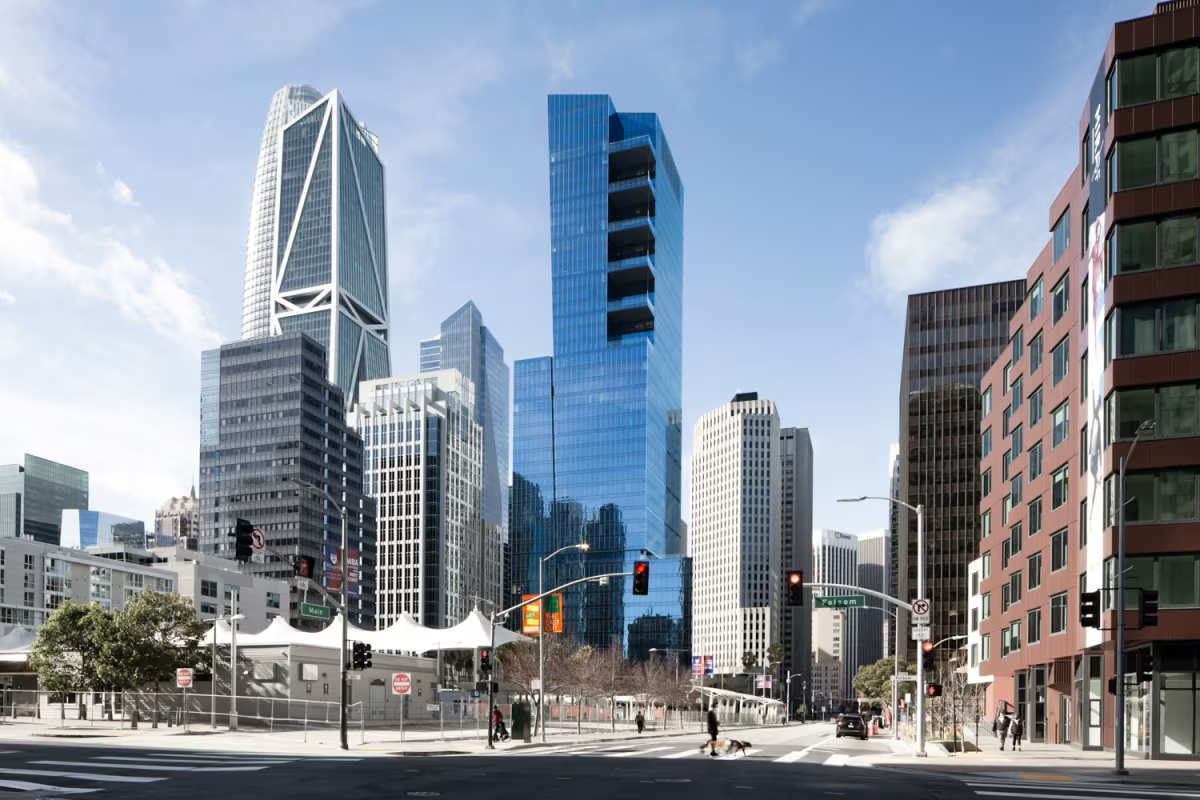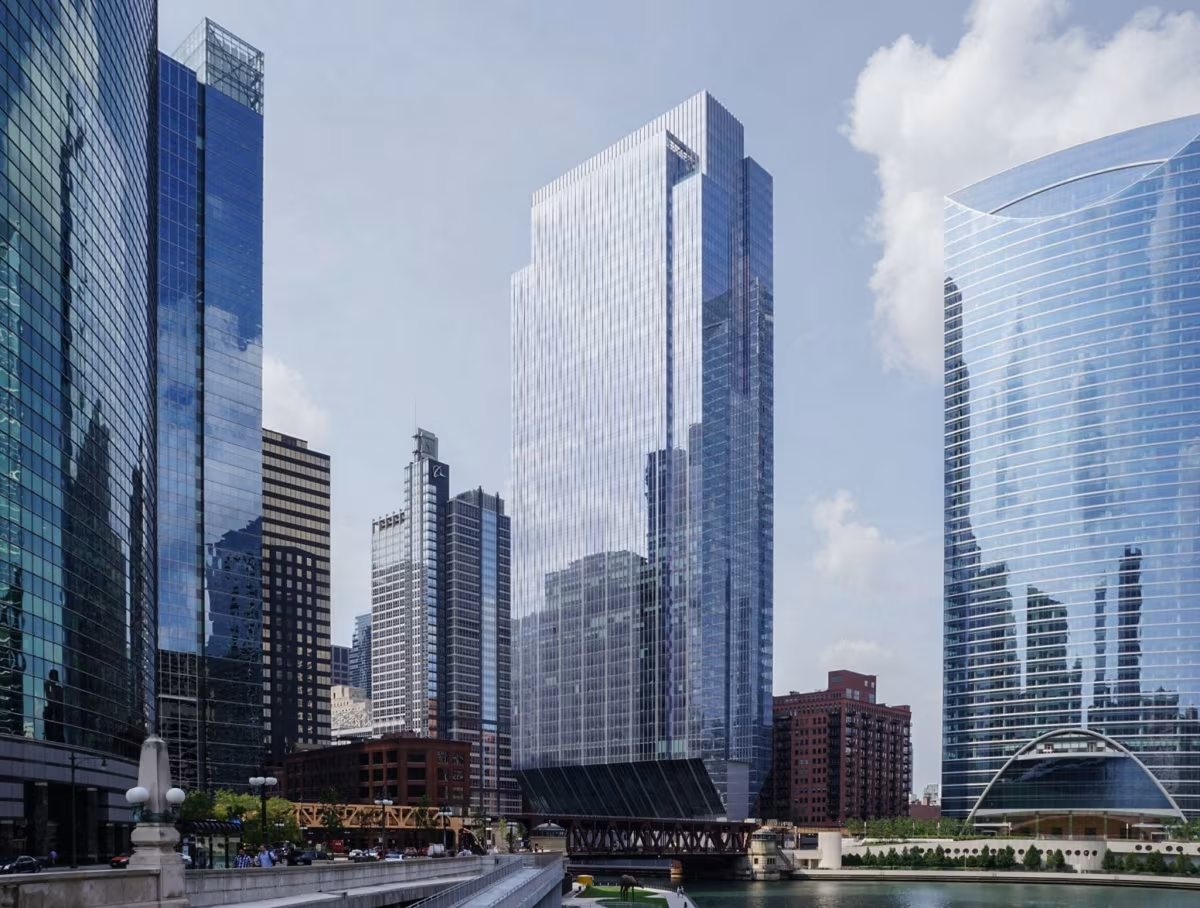Park Tower at Transbay vs 150 North Riverside Building


Comparing the Park Tower at Transbay and the 150 North Riverside Building is an interesting exercise, because even though they are located in different cities (San Francisco, CA and Chicago, IL), both were designed by Goettsch Partners and finished within just one year apart. This gives us the chance to see how the same architect's ideas were expressed in different urban contexts almost simultaneously.
Height & Size
The 150 North Riverside Building is clearly the larger tower of the two, both in terms of height and number of floors. It rises to 725ft (221m) with 54 floors above ground, while the Park Tower at Transbay reaches 604ft (184m) with 43 floors above ground.
Of course, each project may have faced different briefs or regulatory constraints, which we don't really know about and could also explain the outcome.
Architectural Style
Both the Park Tower at Transbay and the 150 North Riverside Building were designed in line with the aesthetic conventions of the Contemporary style.
At the time, this style was at the height of its popularity. So both Goettsch Partners and Goettsch Partners followed what was in many ways expected of them, producing designs that fit comfortably within contemporary architectural norms, rather than breaking with convention.
Uses
Both the Park Tower at Transbay and the 150 North Riverside Building were designed to serve as commercial towers, and that has remained their main use since their completion, serving similar roles in the urban fabric.
Both towers provide significant parking capacity, with Park Tower at Transbay offering 117 spaces and the 150 North Riverside Building offering 72.
Structure & Facade
The two towers rely on different structural systems, reflecting distinct engineering strategies.
The Park Tower at Transbay uses a Frame structural system, which relies on a regular grid of columns and beams to sustain its weight, while the 150 North Riverside Building uses a Framed Tube In Tube system, that combines a strong central core with a perimeter tube of columns.
Yet, when it comes to their facade, they both employed the same solution, a Curtain Wall facade.
A curtain wall is a non-load-bearing facade hung from the structural frame. It is anchored to floor slabs and transfers only its own weight and wind loads, allowing for sleek, glassy exteriors.
| Park Tower at Transbay | 150 North Riverside Building | |
|---|---|---|
| Goettsch Partners | Architect | Goettsch Partners |
| 2015 | Construction Started | 2014 |
| 2018 | Year Completed | 2017 |
| Contemporary | Architectural Style | Contemporary |
| Commercial | Current Use | Commercial |
| 43 | Floors Above Ground | 54 |
| 2 | Floors Below Ground | 1 |
| 170 | Last Floor Height | 204 |
| 184 m | Height (m) | 221 m |
| Frame | Structure Type | Framed Tube In Tube |
| Steel | Vertical Structure Material | Steel And Concrete |
| Concrete | Horizontal Structure Material | Concrete |
| No | Facade Structural? | No |
| Clark Construction | Main Contractor | Clark Construction |
| MetLife Inc, John Buck Co, And Golub Real Estate Development | Developer | Riverside Investment & Development |
| Andrea Cochran Landscape Architecture | Landscape Architect | Wolff Landscape Architecture |
| WSP | MEP Engineer | Cosentini Associates |
| Magnusson Klemencic Associates | Structural Engineer | Magnusson Klemencic Associates |
| CA | State | IL |
| San Francisco | City | Chicago |
| 250 Howard Street | Address | 150 North Riverside Plaza |